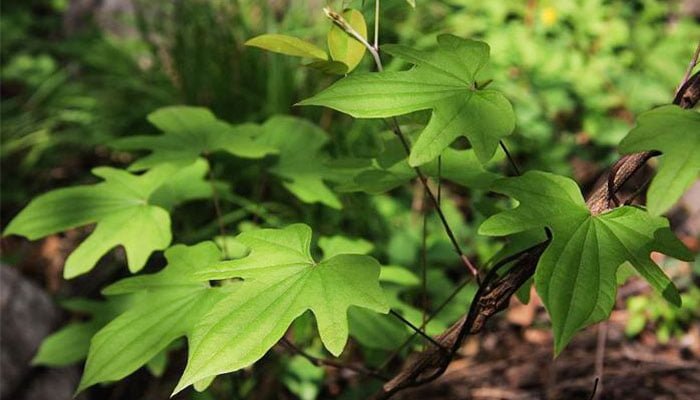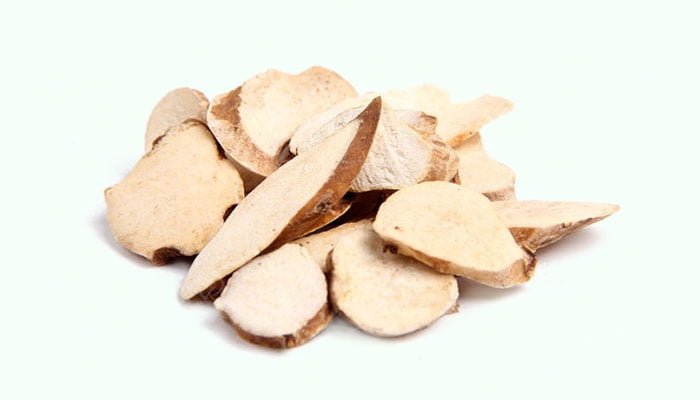What Is Chuan Shan Long
Chuan Shan Long commonly known as Rhizoma Dioscoreae Nipponicae is the rhizome of Dioscorea nipponica, which is a perennial twiner belonging to the family Dioscoreaceae. It is a practical Chinese herbal medicine, which first appeared in <Dong Bei Yao Yong Zhi Wu Zhi> (Journal of Medicinal Plants in Northeast China) in 1,963 AD.
There are about 631 species of Dioscorea, which are mainly distributed in tropical and warm temperate regions. Currently, only a few species have been introduced into temperate regions. Some of these species are medicinal, such as Dioscorea polystachya and Dioscorea nipponica.
Dioscorea nipponica is hardy. They grow well in loose, fertile, moist, yellow gravel loam and black gravel loam with deep humus. They often grow in semi-shady and semi-sunny hillside shrubs, sparse forests, and forest edges on both sides of valleys on mountainsides at an altitude of 100-1,700 meters. They are distributed in the northeastern, northern, eastern, and central regions of China, Eastern Russia, South Korea, and Japan.

In spring and autumn, people gather the rhizomes of Dioscorea nipponica, wash them with water, remove their outer skin and fibrous roots, dry them in the sun, cut them into thick slices, and make them into Chinese herbal medicines.
Chuan Shan Long contains dioscin, gracillin, trillin, 26-O-β-d-glucopyranosyl-25(R)-22-hydroxy-furostanol-Δ5(6)-en-3β,26-dihydroxyl-3-O-{α-l-rhamnopyranosyl-(1 → 2)-α-l-rhamnopyranosyl-(1 → 4)}-β-d-glucopyranoside, 26-O-β-d-glucopyranosyl-25(R)-22-hydroxy-furostanol-Δ5(6)-en-3β,26-dihydroxyl-3-O-{α-l-rhamnopyranosyl-(1 → 2)-α-l-rhamnopyranosyl-(1 → 3)}-β-d-glucopyranoside, diosgenin, asperin, 25-Δ-spirosta-3,5-diene, piscidic acid, 3β,26-glycol-25(R)-Δ5,20(22)-diene-furostanol-26-O-β-d-glucopyranoside, prosapogenin A of dioscin, pseudo-protodioscin, protodioscin, protogracillin, kikuba-saponin, smilagenone, epistephanine, allantoin, sterols, flavones, resins, polysaccharides, and starch.
Generally, yellow-white or brown-yellow and solid Chuan Shan Long with a white or yellow-white cross-section and light brown punctate vascular bundles is preferred.
According to the Chinese Pharmacopoeia, the medicinal nature of Chuan Shan Long is relatively warm, with a sweet and bitter taste. It has a certain therapeutic effect on the pathological changes of the kidney, liver, and lung meridians.
In traditional Chinese medicine, it is often used to expel wind and dampness, relax muscles and tendons and remove obstruction from meridians, promote blood circulation and relieve pain, relieve cough and asthma, and treat rheumatic arthritis, rheumatoid arthritis, gouty arthritis, severe lumbar sprain, traumatic injuries, senile low back and leg pain, hyperosteogeny, osteoarthritis, coronary disease, angina pectoris, rheumatic heart disease, bronchial asthma, chronic bronchitis, diabetes, lipoma, and chronic brucellosis.
There are about 100 kinds of traditional Chinese medicine prescriptions containing it, such as Chuan Long Gu Jing Pian, Gu Long capsules, and Long Xiang Ping Chuan capsules.
Benefits
- Anti-inflammation, inhibiting xylene-induced ear swelling in mice and carrageenan-induced ankle swelling in rats.
- Increasing pain threshold, prolonging the tail-shrinking reaction time in mice induced by hot water, and reducing the number of writhing in mice induced by acetic acid.
- Prolonging the incubation period of guinea pig asthma induced by ovalbumin, shortening the duration of wheezing and slowing down the respiratory rate after an asthma attack.
- Improving the bronchial wall and increasing the thickness of bronchial smooth muscle in asthmatic mice.
- Reducing CCL4 or alcohol-induced liver injury in rats and protecting the liver.
- Decreasing serum total cholesterol, triglyceride, and low-density lipoprotein levels in hyperlipidemia rats.
- Decreasing insulin levels in type 2 diabetic rats and in obese rats induced by sodium L-glutamate and improving their body fat metabolism.
- Promoting the excretion of uric acid, inhibiting the production of uric acid, and reducing the level of serum uric acid in mice.
- Expelling wind and dampness, treating rheumatic arthralgia, joint swelling, waist and leg pain, and limb numbness.
- Promoting blood circulation and relieving pain, treating severe lumbar sprain and traumatic injuries.
- Clearing lung and resolving phlegm, relieving cough and asthma.
- Dioscin can inhibit the proliferation of gastric cancer SGC-7901 cells, lung cancer A549 cells, and leukemia HL-60 cells, and induce the apoptosis of colon cancer HCT-116 cells and cervical cancer HeLa cells.
- Its water extract can prolong the survival time of mice under normal pressure and hypoxia conditions and the weight-bearing swimming time of mice. It has anti-hypoxia and anti-fatigue effects.
- Its decoction has an obvious inhibitory effect on Staphylococcus aureus, Sarcines, Escherichia coli, Catarella, Neisseria meningitidis, and Streptococcus A.
- Its total saponins can inhibit the production of SRBC hemolysin antibody in mice and the delayed-type hypersensitivity reaction induced by dinitrofluorobenzene in mice[1]. The study showed that it has inhibitory effects on both cellular and humoral immunity.
Combinations
- It can be used in combination with Wei Ling Xian (Radix Clematidis), Xu Chang Qing (Radix et Rhizoma Cynanchi Paniculati), Du Huo (Radix Angelicae Pubescentis), etc. to treat rheumatic arthralgia, joint swelling, waist and leg pain, and limb numbness.
- It can be used in combination with Sang Zhi (Ramulus Mori), Luo Shi Teng (Caulis Trachelospermi), Ren Dong Teng (Caulis Lonicerae Japonicae), etc. to treat arthralgia caused by wind-damp-heat.
- It can be combined with Gu Sui Bu (Rhizoma Drynariae) to treat severe lumbar sprain and traumatic injuries.
- It can be used in combination with Ku Xing Ren (Bitter Apricot Seed), Su Zi (Fructus Perillae), Kuan Dong Hua (Flos Farfarae), etc. to treat cough and excessive phlegm.
- It can be used in combination with Yin Yang Huo (Horny Goat Weed), Gou Ji (Rhizoma Cibotii), Chuan Niu Xi (Radix Cyathulae), Shu Di Huang (Processed Rehmannia Root), Gou Qi Zi (Fructus Lycii), etc. to treat joint pain caused by kidney asthenia with blood stasis.
Side Effects
- Animal experiments have confirmed that it has certain harm to the liver.
- A small percentage of patients taking it may cause mild diarrhea, constipation, stomach discomfort, nausea, vomiting, stomatitis, dizziness, blurred vision, and temporary increase of alanine aminotransferase.
- These symptoms resolved on their own after cessation of the medication.
Precautions and Warnings
- The dosage of Chuan Shan Long should be controlled between 9-15g.
- It can be made into decoctions, pills, lotions, or medical liquors.
- People who are allergic to Chuan Shan Long should not take it.
- People with hyperactivity of fire due to yin deficiency should not take it.
- People with liver insufficiency should not take it.
- Pregnant and breastfeeding women should take it under the guidance of a doctor.
- Children, the elderly, and the infirm should take it under the guidance of a doctor.
